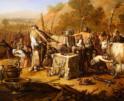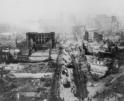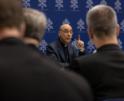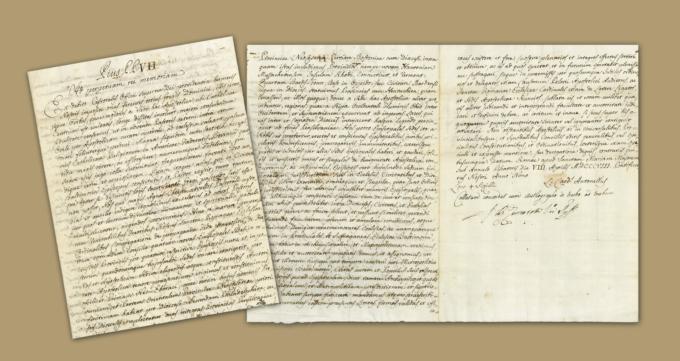
Culture

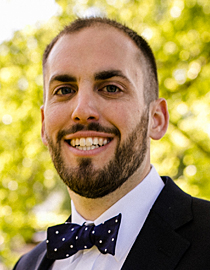
Lester
Feb. 16 marked 150 years since the Diocese of Providence was created by Pope Pius IX.
The first large concentration of Catholics to enter Rhode Island is believed to have taken place in the summer of 1780, when a French naval fleet sent to aid the colonies in their war for independence from Great Britain harbored in Newport. Its commander, Admiral Charles de Ternay, died while at anchor and his funeral is regarded as the first public Catholic Mass celebrated in the state.
The next notable instance came in December 1789 when Abbe Claude de la Poterie, named pastor of the Boston Mission earlier that year, visited Providence. At the time of his visit, the Diocese of Baltimore was the only diocese in the United States, and its borders matched those of the new country. In 1808, four new dioceses were created, and Rhode Island came under the jurisdiction of the Diocese of Boston, which encompassed all New England.
As the Catholic population in the United States continued to grow, it was necessary that additional dioceses be created to serve Catholics more effectively. In New England, the first of these was the Diocese of Hartford (CT) in 1843, which served Catholics in the states of Connecticut and Rhode Island. However, the Catholic population in Providence was substantially larger than that of Hartford, so the United States bishops sent a petition to Rome, requesting the ecclesiastical seat of the diocese be changed to the former. Pope Pius IX approved the petition and, while the bishop moved to Providence, it remained the Diocese of Hartford.
Less than three decades later, so much had the Catholic population in Connecticut and Rhode Island grown that it became necessary to split this large diocese along state lines. In 1871, Bishop Francis McFarland moved the seat of the diocese back to Hartford so that on Feb. 16, 1872, the Diocese of Providence could be erected in Rome. Two months later, on April 28, Father Thomas Francis Hendricken was consecrated as the first bishop of Providence.
For more information about the Diocese of Providence, including a detailed history and schedule of events celebrating its anniversary, please visit dioceseofprovidence.org/150.
--
As for the rest of New England, in 1853, two dioceses were erected: the Diocese of Burlington (VT) and the Diocese of Portland (ME). The latter served both Maine and New Hampshire Catholics until the Diocese of Manchester (NH) was created in 1884.
In Massachusetts, the first division came in 1870 when the Diocese of Springfield (MA) was erected, serving all Catholics from Worcester County to the western border of the state. Further divisions came via the Diocese of Fall River in 1904, and the Diocese of Worcester in 1950.
In 1875, Boston was elevated to an archdiocese, as was Hartford in 1953 when the Dioceses of Bridgeport and Norwich were created.
--
The reason for sharing this rather tedious list of developments is because we are frequently asked what the difference is between an archdiocese and diocese and thought it worth attempting to provide a basic explanation in the remainder of this column.
In some respects, there is no difference between the two, both are administrative entities defined by a geographic boundary, and whose purpose it is to serve all the people of a certain rite residing within that boundary. This being the case, it is possible two or more dioceses may cover the same geographic area to serve those of their respective rite. For example, the Melkite Eparchy of Newton serves all Melkite Catholics in the United States, within which there are archdioceses and dioceses of other Catholic rites.
Dioceses are said to have their origins in early Christianity when bishops served as leaders of churches in major cities. As populations expanded into the surrounding environs, churches constructed in those areas were placed under his authority as well. The moniker first used to describe these areas was "Church," then "Parish," and, by the 13th century, the term "Diocese" was most common.
Canon Law dictates that, in the Latin Church, the right to erect, change, or suppress a diocese lies with the Roman Pontiff, sometimes suggested by an Ecumenical Council. It also describes how each diocese should be divided into parishes, each with its own Church and pastor to serve those living within the defined boundary.
An archdiocese differs in that it is also considered the center of a Metropolitan See for an Ecclesiastical Province, consisting of the archdiocese and several suffragan dioceses. For example, Boston is the Metropolitan See for a province containing the dioceses in Massachusetts, Maine, New Hampshire, and Vermont. There are no specifications as to how many suffragan dioceses need be attached, there may even be none.
In terms of leadership, it might be best to think of each person as having both administrative and ecclesiastical titles. For instance, in lay terms we might refer to the bishop of an archdiocese as "archbishop," and most often the bishop of a diocese as "diocesan bishop." But their ecclesiastical rank is typically that of "Bishop" or "Cardinal." In the context of the Metropolitan See, the archbishop may also be referred to as the "Metropolitan."
Archdioceses and their suffragan dioceses operate independently of one another. While the archbishop/metropolitan is considered the "first among equals," he does not influence the day-to-day operations of the suffragan dioceses. His special privileges extend to reporting any ecclesiastical irregularities he observes in suffragan dioceses to Rome, though he cannot act upon them without Rome's consent. In addition, he is permitted to celebrate Mass, hear confessions, and administer sacraments in suffragan dioceses as if they were his own.
This is, admittedly, a rather simple overview, but one which will hopefully clarify a few of the basic elements of these relationships. For those who wish to learn more, they may want to continue by reading the Code of Canon Law (1983), Canons 431-459.
- Thomas Lester is the archivist of the Archdiocese of Boston.
Recent articles in the Culture & Events section
-
Scripture Reflection for April 28, 2024, Fifth Sunday of EasterDeacon Greg Kandra
-
Boston and the nation respond to the San Francisco Earthquake of 1906Thomas Lester
-
See you in the storyLaura Kelly Fanucci
-
'Dignitas' and the mediaRussell Shaw
-
Scripture Reflection for April 14, 2024, Third Sunday of EasterDeacon Greg Kandra

